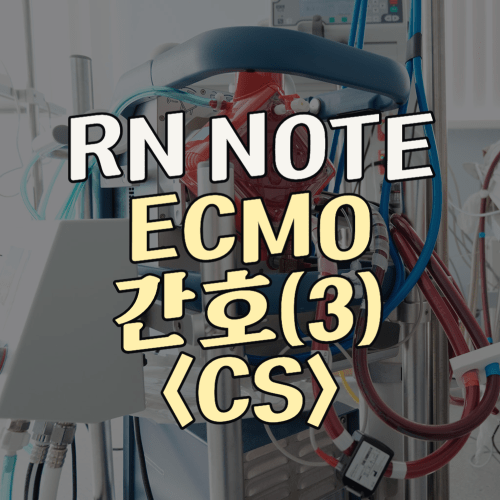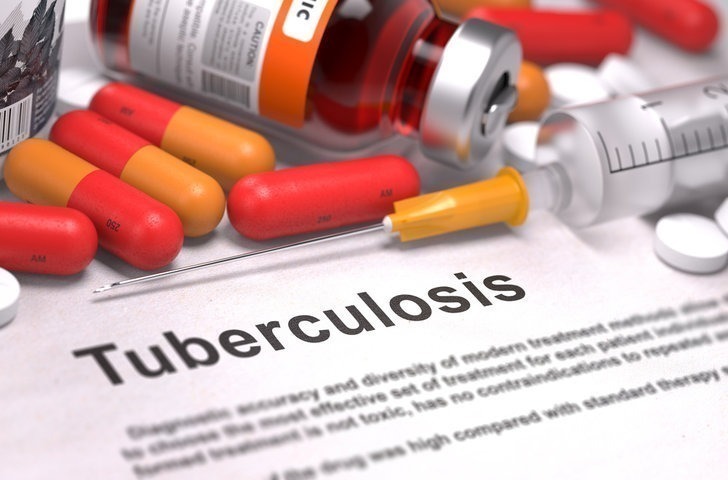이전 글
Cannulation
Method
- Surgical central cannulation
- Surgical peripheral cannulation
- Percutaneous cannulation
Site
- Venous: internal jugular vein, femoral vein, right atrium
- Arterial: carotid artery, femoral artery, aorta
Size
- :15~29 Fr 내에서 선택
- 환자 BSA 에 맞는 cannula중 가 능한 큰 size 선택



- Two-cannula Technique
Drained cann:
IVC tip 5-10cm below the RA-IVC junction(25-29F,50cm>).
Returned cann:
RA-SVC iunction/17-19F,20cm).
RA(21-25F,50cm>)
- Single-cannula Technique
Avalon: 27 or 31F,
- Three-cannula Technique
Femorofemoral cann
2nd RIJV 19-21F 20cm
Types of ECMO

V-V ECMO & V-A ECMO
Drain(access line)-Reinfusion(return line)
a. Veno-venous
Supports only the lungs
Hemodynamic에 영향을 주지 않는다
CPR 상황 시 흉부압박을 해야한다
b. Veno-arterial
Support heart & lung
| V-V ECMO | V-A ECMO | |
| Primary use case | Severe respiratory failure | Severe cardiac or circulatory failure |
| Blood collection | Vein (typically femoral or jugular) | Vein (typically femoral or jugular) |
| Blood return | Another vein | Artery (typically the aorta) |
| Mechanism | Adds oxygen and removes CO2 | Bypasses the heart to circulate oxygenated blood |
| Application | ARDS, severe pneumonia, etc. | Cardiogenic shock, severe heart failure, cardiac arrest |
| Support provided | Respiratory support | Cardiac and respiratory support |
V-V ECMO

- 정맥혈을 우심방으로 부터 배액 받아 ECMO회로를 통해 O2공급과 CO2를 제거한 후 정맥순환계로 주입
- 폐의 환기 요구를 감소, 과도한ventilator setting에 의한 폐손상을 줄여주어 폐를 쉬게 함으로써 폐의 회복을 촉진
- 산소공급의 효율성은 환자의 CO에 따른 pump flow에 따라 달라진다
To remove CO2 increase the O2 sweep gas
To increase the pO2 you increase the pump flow

Femoro-jugular VV ECMO

Femoro-femoral VV ECMO

V-A ECMO

- 정맥혈을 우심방으로 부터 배액 받아 ECMO 회로를 통해 O2공급과 CO2를 제거한 후 동맥순환계로 주입
- 산소화된 혈액은 동맥계로 직접 주입되기 때문에 pump flow의 변화는 PO2에 영향을 주지 않고 환자의 Cardiac output에 영향을 준다.
- ECMO failure는 Cardiac arrest를 초래할 수 있다



Flat arterial line due to the laminar flow of the ECMO pump and thd absence of heart contraction
V-V ECMO vs V-A CEMO
| V-V ECMO | V-A ECMO |
| • Respiratory support • Vein-Vein • 동맥손상 가능성이 적다 • Circuit으로 인한 air or emboli 가능성이 감소 • Circuit의 pressure가 낮아 circuit 수명을 연장시킨다 • Hemodynamic에 영향 X • Arterial pO2 55-90mmHg • Flow의 변화는 pO2에 영향을 준다 | • Respiratory & hemodynamic support • Vein-artery • 회복 또는 심장이식을 위한 bridge • Pump flow = 환자의 CO (flow가 제대로 유지되지 않으면 Cardiac arrest로 이어질 수 있다) • 산화기에서 가스교환 된 혈액은 동맥혈로 주입된다= pO2 400-500mmHg • Flow의 변화는 CO에 영향을 준다. |
Circuit related management
Care of Equipment
- 전원상태 확인(wall power사용하기)

Wall power off

Wall power on
- Pump head가 다른 장비와 최대한 부딪히지 않는 곳에 위치시킨다(ex:portable x-ray)
- Heater/cooler 호스와 O2 flow line이 발이나 침대 등 에 눌려 폐쇄되지 않도록 한다
- 회로의 어떠한 부분도 알코올이나 유기용제에 닿지 않도록 한다.(베타딘 사용)

Pump flow
Flow rates: V-V
- 환자 CO의 2/3, 최소 50%
- Sweep gas flow는 ECMO flow의 1~2배
- Pump flow를 유지하기 위해 crystalloid를 늘리는건 피해야함: 부종→호흡기능저하
- 최소 SaO2 85-90% 또는 PaO2 55-60mmHg
Flow rates: V-A
- Flow rate CI 2.1-2.4L/min/m2
Circuit의 혈전을 예방하기 위해 ECMO flow를 2L/min/m2 미만으로 오랜시간 유지하는 것을 피해야 한다.
Oxygenation
- Goal: DO2:VO2 >3
- V-A: SaO2>90%, SvO2>70% (DO2/VO2=3~4)
- V-V: SaO2:60-90%(ECMO flow, native venous flow, lung function, cardiac output에 따라 다름) SvO2>70%
Anticoagulation
- Heparin (반감기 30분-1시간)
- Cannulation: ACT >200초(Heparin IVS 50-100u/kg)
- Continuous infusion:10-15u/kg/hr에서 max 40-60u/kg/hr까지
- ACT(activated clotting time, 활성화 응고시간)
- Normal ACT의 1.5-2배: ELSO guideline:180-220sec 출혈경향이 없고 PLT 80000이상의 환자) ECMO weaning time(ECMO flow 1.5-2L):200-250초
★ 본 병원 : ACT 140-160sec - aPTT target: 50-70sec(출혈경향이 없고 PLT 80000이상의 환자인 경우 )
- Nafamostat mesilate(Futhan)
- HIT: Direct thrombin inhibitor(argatroban or bivalirudin) ACT, aPTT로 측정(정상의 1.5배 유지)
Traveling

Pump console(베터리 충전 확인), pump head, oxygenator, hand crank, patient monitor, Ambu mask&bag, infusion pump(중요한 약물만 최소한), 응급약물, portable O2 tank 2개(oxygenator, Ambu bagging)
Patient related management
Hemodynamics
| V-V | V-A |
| Indirect cardiac support | direct cardiac support |
| • 개선된 산소화로 mechanical ventilator support 감소, RV afterload감소→ 우심실 기능 향상 능개선 • 산소포화도 증가→심근의 산소 공급개선→심근기능 개선 • 고탄소성 산증, 혐기성대사 감소 → 심근기능 개선 • Pulmonary vascular에 산소공급 증가 → 폐혈관의 저산소성 혈관수축(Hypoxic vasocontriction) 완화 • SvO2가 70%미만: pump flow 올리기, 수혈 고려 (Hct 35%이상으로 유지) | • Pump flow + native cardiac output + vascular resistance에 의해 결정 • MBP:50-70mmHg • 처음 ECMO시작시 MBP 저하로 고용량의 승압제를 사용중인 경우가 많다. 환자가 안정되면 점차 약물을 줄여나가야 함 • 부적절한 관류압력 (적은 소변량, 낮은 관류):낮은 용량의 승압제, 혈액추가 • SvO2가 70%이상: MBP가 낮더라도 산소전달은 적 절할수있음 • SvO2가 70%미만: pump flow 올리기, 수혈고려 (Hct 35%이상으로 유지) |
Cardiovascular에 사용되는 agent감소 또는 제거 Organ perfusion개선

Hemodynamic observation: BP, CVP 저하
Chattering
ECMO line의 떨림, flow의 fluctuation과 같은 hypovolemia 증상
- Hypovolemia는 blood flow를 저하시킴
- 혈관 내 손상, hemolysis유발
- Gas exchange, hemodynamic의 변화를 가져옴
Respiratory Management
- PCV->CPAP
- ECMO flow가 적절하고 환자의 oxygenation이 호전되었다면 ventilator support를 줄인다
- (Resting setting)
- FiO2 < 0.5
- PIP < 35cmH2O
- PEEP < 15cmH2O
- Respiratory < 12 회/분
- ET suction: 최대한 부드럽게 시행. ECMO 로 lung support를 하고 있어 보통의 환자보다 오랜 시 간 해도 됨
- 3-5일내 Tracheostomy 또는 Extubation 고려(ELSO guideline)
- Blood gas management: ECMO >>ventilator
Sedation
- Cannulation에서 처음 12-24시간: 완전 진정
- 삽관 중 공기색전증을 유발할 수 있는 자발 적 호흡을 피하기 위함
- 삽관을 어렵게 할 수 있는 움직임을 피하고 환자를 편안하게 하기 위함
- 대사율 최소화
- 환자와의 의사소통, 통증 평가 및 대뇌 손상 의 조기 인식 가능
- RASS(Richmond Agitation Sedation Scale):-1~0
- After the patient is stable on ECLS: 가벼운 진정
- 불안, 움직임, 기침, decannulation의 위험, 불안정한 drainage가 있는 경우 충분한 진정과 진통제 필요

Blood volume, fluid balance and hematocrit
- 목표: 적절한 적혈구 용적률, 정상 체중(수액 과부하 없음), 정상 혈액량
- Daily CBC f/u: Hb 12-14mg/dl, Hct 35%이상
- ECMO circuit priming(crystalloid) → Hemodilution → edema
- CVP 5-10mmHg
- 혈역학적으로 안정화 되면 이뇨제 시작(건체 중) → Negative I/O balance
- Renal failure →CRRT시작

Renal support

- Normal dry weight
- Fluid 과다 주입 하지 않기
- MAP 60mmHg 이상 / CVP 5-10mmHg
- Acceptable urine output: 1-2ml/kg/hr
- Daily body weight check
- Negative I/O balance
- 이뇨제 사용
- Early CRRT : 부종이 악화되 기 전에
Peripheral circulation
Limb ischemia
- V-A ECMO, 하지허혈, 구획증후군 (retrograde flow로 인해)
- 동맥 cannula가 삽입된 다리 말단부의 피부 색 변화를 관찰, dorsalis pedis artery pulse check, 도플러검사 → 원위부 관류 (distal perfusion, ex: superficial femoral artery) 시행
Others
Temperature
• Normothermia, set heater/cooler at 37 degrees
Infection and antibiotics
- 삽관부위 확인(Clean)
- 필요시 Blood Cx 혹은다른 Cx
- Vein puncture 주의:Blood Cx도 C-line, A-line 활용고려, 장시간의 압박 요구
- 항생제 사용: ECMO 시작 시 line sepsis예방 위해
Positioning
- position change (“open sternum”환자 제외), air mattress →decannulation주의!!
- flow가 잘 유지되는지, line이 눌리거나 꺾이지 않게 주의하기. Flow 10%이상 변화 시 v/s 확인 후 notify
- 어떠한 이유로 ECMO flow가 유지되지 않고, 문제점이 빨리 교정 되지 않으면 환자가 사망할 수 있다!!
Complications/Troubleshooting
Recirculation
- Drain catheter와 Reinfusion catheter가 가까운 경우
- Pre membrane(venous)pO2< 50mmHg
➡️ Reposition access line (10CM 이상)
V-A ECMO
A-line 은 왜 오른손에 잡아야 할까?

- 심장기능은 회복되었으나, 폐기능이 나쁜경우..
- 심장에서 박출되는 저농도 산소의 혈액과 ECMO에서 거꾸로 올라오는 고농도산 소의 혈액이 중간부분에서 만나 mixing zone이 생성 → 상대적으로 낮은 산소 농도의 혈액이 머리로 가게 됨 →저산소성 뇌손상 발생
V-A ECMO
Differential hypoxemia
= Two circulatory syndrome = Harlequin syndrome
⬇️
ABGA(Rt. Radial a-line)
오른 손 또는 이마에서 saturation check
⬇️
Oxygenator 기능확인 pO2 > 150mmHg Pump flow 가능한 높게 Ventilation/PEEP/FiO2 ↑
VVA mode로 전환 또는
심기능이 회복상태라면 VV mode로 변경


Harlequin syndrome management
VA→VVA
• Drain: Vein
• Reinfusion: Artery+Vein
→ vein의 저항이 훨씬 작기때문에 venous cannula 로만 혈액이 들어갈 위험 → arterial infusion flow↓ →LV support효과 ↓
: venous infusion line을 partial clamping하여 flow를 인위적으로 낮출 수 있다.
LV distension
좌심실로 기관지 정맥 등으로부터 혈류가 유입→좌심실, 좌심방, 폐순환 압력 ↑ →좌심실 과잉팽창( LV overdistension) & stagnation ->혈전 형성
LV decompression :강심제, vasodilators, Diuretics, 중재술, 수술

Bleeding
- 원인
- Systemic anticoagulation
- Thrombocytopenia
- Thrombocytopathy •
- 부위
- Cannulation site, Operation site, Catheter passage, Mucous membrane, GI bleeding, Brain parenchyma
- 최적의 Anticoagulation 상태
- Optimal ACT
- Platelet transfusion >80000
- Hematocrit: 35-40%
- 예방
- IV, E-T suction, foley/L-tube 삽입시 주의
- Procedure는 낮은 ACT 상태에서 시행해야함
- Stress ulcer prophylaxis is standard
- Neurological and pupillary assessment(brain hemorrhage)
- Cannula for bleeding: oozing여부확인
- If patient bleeding
- Heparin stop
- 원인 파악, 교정
- T/F: Platelets, Cryoprecipitate, FFP, packed RBC
- Protamine 사용 금기: circuit내 심각한 thrombosis 유발 가능성
Hemolysis
- 원인
- Circuit 또는 cannula orifice내 clot
- Return cannula의 높은 저항 또는 막힘
- “over spinning” of pump speed
- 증상
- Red or dark brown urine
- High K+
- RF
- Jaundice(late sign)
- Access line chattering
- Management
- Plasma free Hb: <10mg/dL(50mg/dl 이상 시 원인 조사필요)
( hemolysis와 관련된 Hb저하) - Volume↑
- Pump flow setting 확인
- Cannula obstruction 여부 확인 (Echo)
- Consider changing circuit
- Plasma free Hb: <10mg/dL(50mg/dl 이상 시 원인 조사필요)

Thrombus
- Circuit의 전체를 light를 비추어 혈전여부 를 확인한다
- Circuit의 모든 부위에 혈전이 생길 수 있다.
- 1-5mm크기의 혈전은 circuit change가 필요하지 않으며 observation.
- 5mm이상의 혈전 또는 환자에게 주입되는 회 로(post membrane)의 커진 혈전이 있을 경우 해당 부분을 제거하거나 전체 회로를 바 꿔야함
- 혈소판 또는 Fibrin은 회로의 연결부위나 정 체된 부분에서 흰색으로 나타난다. 이 또한 5mm이상 크거나 점차 커지지 않는 한 observation

Emergency Complications
- 환자의 생명이 위협받는 즉각적인 처치가 필요한 상황
- General rules
- Call
- Clamp
- Ventilate, hemodynamic support
Decannulation
| V-V | V-A |
| Hypoxemia Cardiac arrest(cardiac & respiratory) bleeding | Cardiac arrest Central cannula가 빠진 경우 치명적 bleeding |
Management
- 3C rule
- Clamp
- Call
- Compress
- CPR, ventilation & inotropic support, T/F
- Peripheral: apply pressure
- Central: prepare chest opening
Cardiac arrest on VA ECMO

Cardiac arrest
| V-V | V-A |
| • No patient circulation • ECMO flow decrease • Patient in cardiac arrest with no output | Little hemodynamic effect if flow > 4L/min |
| • Call for help • CPR | • 적절한 flow 설정 • Call for help • Pump에 문제가 없다면 CPR은 필요하지 않다 • NSR→ V-tac, V-fib → Defibrillation |
Pump failure
- 기계적 문제 또는 pump head이탈로 flow 가 소실
- Pump stop 기간 동안 circuit내 혈전이 생길 수 있다
- 예방
- 항상 다른 의료장비와 부딪히지 않도록 pump head를 위치 시켜야 함
- 배터리 사용은 최소한으로
- Wall power사용하기
- 충전 확인하기
| V-V | V-A |
| • Hypoxemia/hypercarbia which may lead to cardiac arrest | • Cardiac arrest if circuit providing full CO • 만약 native CO이 있다면 저혈압 및 저산소증의 정도 는 심장기능에 따라 달라짐 |
Pump failure Management
- Call
- Ventilate & hemodynamic support
- Electrical motor failure
- Clamp line & turn off pump
- 만약 껐다 켜도 해결되지 않으면 새로운 기계가 도착 전까지 Hand crank사용
- Pump head 다시 장착
- Turn on pump to 1500rpm & remove clamp
- Rpm 점차적으로 올리기
- Pump head disengaged
- Clamp line & decrease pump speed
- Pump head 다시 장착
- Turn on pump to 1500rpm & remove clamp
- Rpm 점차적으로 올리기
Weaning from ECMO
| V-V | V-A |
| X-ray image, 폐 순응도, PaO2개선 | 최소 24시간 이상 맥압이 발생하는 동맥파형이 있고, 최소 용량 승압제 사용에서 MBP 60mmHg이상 유지 |
| • Pump Flow 유지 • 적절한 ventilator setting • Oxygenator의 O2 stop • 6hr stability then decannulation | • Pump flow 1-1.5L/min까지 점차 낮추고 심초음 파 시행 • Heparin stop후 30-60min후 decannulation ✔️ 호흡기능 저하 우려 시 ▶️ Pump flow <1.5L/min 상태에서 ▶️ oxygenator의 O2 stop ▶️ Ventilator 단독으로의 산소공급 평가 ▶️ O2, CO2 good → decannulation |
Removal of cannula
▶️ Packed RBC 2pack 준비
▶️ Artery: surgical repair, Perclose proglide closure device사용, compression만 하는 경우 30분 이상, Sand bag 8시간 이상, ABR 필요
▶️ Vein: compression for 20minutes



